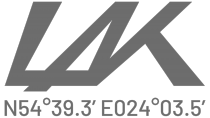Automotive Metal Market Report 2017 - Analysis by Product, Application, End-Use & Segment - Research and Markets
The "Automotive Metal Market, 2014-2025" report has been added to Research and Markets' offering.
The global automotive metals market is expected to reach USD 129.33 billion by 2025, at a growing of 4.4%. The global vehicle demand was 78.2 million units in 2011 and increased to 93.9 million units in 2016. Increasing demand for vehicles worldwide has led to increase in the production of vehicles, thereby propelling the demand for automotive metals.
Regulatory policies have led to increased focus towards the production of lightweight and fuel efficient cars which are anticipated to have a positive impact on the demand for aluminum, magnesium, high strength steel, and advanced high strength steel. Aluminum is the second majorly used metals in the automotive industry. It is used to manufacture engine radiators, wheels, bumpers, suspension parts, engine cylinder blocks, transmission bodies, hood, doors, and frame of the vehicles.
The automotive metals market is expected to witness restrained growth due to the high cost of certain metals including magnesium & aluminum and increasing use of plastics as replacement of metals in certain automotive components. Some of the majorly used plastics in automotive industry are polypropylene, polyurethane, polyamide, acrylonitrile butadiene styrene, and poly vinyl chloride while polyethylene and PMMA are expected to witness the fastest growth in the demand over the next eight years.
Companies Mentioned
- Arcelormittal
- POSCO
- Tata Steels Limited
- Voestalpine Group.
- United States Steel Corporation
- Essar Steel
- Thyssenkrupp AG
- Novelis
- Kaiser Aluminum
- Alcoa
- Nippon Steel & Sumitomo Metal Corporation
- Allegheny Technologies
- Hyundai Steel Co., Ltd
- China Steel Corporation
Key Topics Covered:
Chapter 1. Methodology and Scope
Chapter 2. Executive Summary
Chapter 3. Automotive Metals Market Variables, Trends & Scope
Chapter 4. Automotive Metals: Product Outlook
Chapter 5. Automotive Metals: Application Outlook
Chapter 6. Automotive Metals: End-Use Outlook
Chapter 7. Automotive Metals: Regional Outlook
Chapter 8. Competitive Landscape
Chapter 9. Company Profiles
For more information about this report visit https://www.researchandmarkets.com/research/rwt86j/automotive_metal
View source version on businesswire.com: http://www.businesswire.com/news/home/20171003005961/en/




